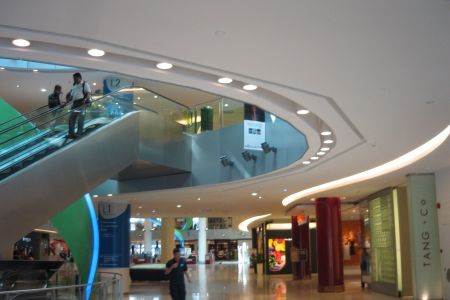
If a fire breaks out, smoke containment systems prevent the movement of smoke and heat from one area to another.
If the smoke is allowed to spread, damage can occur to parts of the building remote from the fire. If the smoke spreads too far and cools it will drop and then there is the risk of the building becoming smoke logged. On the other hand, if the smoke is contained, then the smoke layer remains relatively hot and buoyant, giving rise to more efficient ventilation.
In larger buildings smoke containment systems can create smoke zones or reservoirs for this purpose.
Smoke and fire containment systems: smoke and fire curtains
Smoke containment systems can take the form of a physical barrier such as smoke curtains.
Where it is necessary to contain the fire as well as smoke, fire curtains may be used for containment instead of smoke curtains.
Physical barriers in the form of curtains can be either fixed or movable. Movable systems have the advantage that since they are held retracted at high level, they are virtually invisible until needed. They roll down when required.
Smoke containment systems: pressurisation systems
A wholly different approach can be taken using pressurisation systems. These protect escape routes and fire-fighting shafts against the ingress of smoke by maintaining the pressure within the escape route higher than that in the adjacent spaces. They provide no protection within the space containing the fire, but contain the smoke and heat so that it cannot enter the main building escape routes.
Next steps
Colt can assist with the design of smoke containment schemes. Colt offers a free technical design service on all projects undertaken. Please contact Colt for further information.